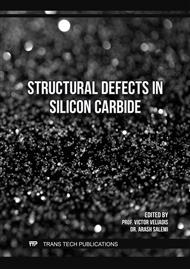p.13
p.21
p.29
p.35
p.43
p.49
p.55
p.63
p.69
Suppression and Analysis of Bipolar Degradation in 4H-SiC PiN Diodes through Proton Implantation
Abstract:
In this paper, a method for suppressing bipolar degradation through proton implantation was investigated. Previous work suggests implantation applied to the full thickness of the epi layer, which results in unwanted defects leading to a deterioration in performance. In this work, proton implantation to the buffer layer was successful in reducing the forward-voltage drift ΔVF of the fabricated SiC PiN diode by 85% at a current density of 800A/cm2, when applying room temperature (RT) proton irradiation at a dose of 1×1016 cm-2. Irradiation solely to the buffer layer keeps the deterioration of forward current performance to a minimum, while the fabricated SiC PiN diodes are more robust against bipolar degradation at higher current density. In addition, RT proton irradiated PiN diodes show full recovery from their bipolar degraded characteristics within 2.5 h of annealing at 350 °C under vacuum. This indicates proton irradiation alters the crystal structure for the stacking fault (SF) to “shrink” back with ease to their initial basal plane dislocations (BPD) state.
Info:
Periodical:
Pages:
69-75
Citation:
Online since:
September 2025
Authors:
Permissions:
Share:
Citation:


